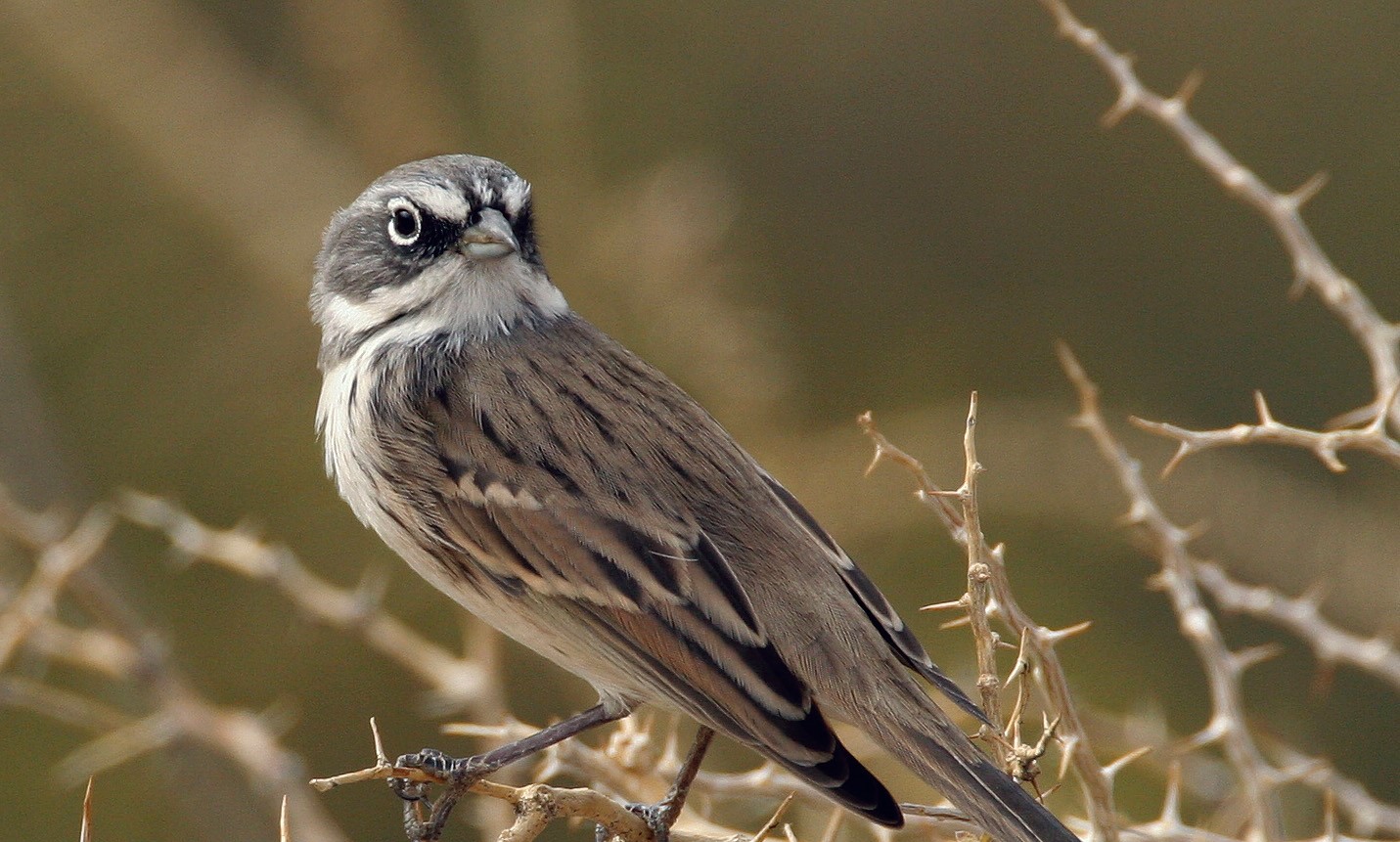
Bell's Sparrow
Aretmisiospiza belli belli
Aretmisiospiza belli belli
Photo Credit: copyright Ron Wolf
| Historically present | |
| Between 2000 and | |
| Last 10 years |
| File name | Lead Author | Year | Type |
|---|---|---|---|
| 2010-11 Baseline Survey Report for the Northern San Ysidro, McMillin, and Little Cedar Canyon Parcels of the the Otay Ranch Preserve | O'Meara, Cailin; Sundberg, J.R.; Bennett, Anna; Dodero, Mark | 2012 | report |
| FINAL HABITAT MANAGEMENT PLAN for Starwood - Santa Fe Valley SECOND AMENDMENT | 2000 | report |
Found in California, Baja California, southwestern Nevada, and western Arizona [1].
Within the MSPA, found in MU’s 3, 4, 5, 6, 8, 9, 10, and 11 [2].
Not listed
Prefers to breed in semi-open habitats with 1-2 m high shrubs [3] The younger, less dense stands of chaparral that have begun to grow back from recent fires are also desired. Habitat selection is usually determined by vertical structure, habitat patchiness, and vegetation density rather than a specific shrub species [4].During the winter months, it is common for Bell’s sparrow to form loose flocks with other sparrow species, including sagebrush sparrows, where they use various low scrub habitats.
The recent split into two distinct species, Bell’s sparrow (A. belli) and sagebrush sparrow (A. nevadensis), has created challenges in field identification [5]. Separating the two taxa in the field has been nearly impossible for many individuals, especially during wintering when the distribution of both species appears to overlap heavily with sagebrush in southeastern California, southern Arizona, and northern Mexico. The explanations for the split are mainly due to differences in mitochondrial DNA, morphology, and ecology between the sagebrush sparrow and Bell’s sparrow [6]. The only physical characteristics separating the two are the contrast of gray head and brown back, bolder back streaking, and reduced malar streak. Bell’s sparrow showed to be darker and browner compared to sagebrush.
Spend most of their time on the ground or concealed and foraging under dense shrubs [7]. Will often run across open areas instead of taking flight. During spring and summer months, males become very conspicuous while perched atop shrubs to sing. Most Bell’s sparrows remain in their breeding range year-round. Migration is a short-distanced trip to western portions of Arizona, southeast California, and northern Mexico. During migration and winter, the Bell’s sparrows form loose flocks with sagebrush sparrows and other species of sparrows.
Nests are generally built by females within shrubs, but can also be in grasses or on the ground under shrubs [7]. Eggs (3-4) are bluish white to pale blue, variably spotted with brown, gray, and black. Incubation lasts about two weeks. Once hatched, the young leave the nest within 9-11 days. Usually 2 broods, sometimes 3 per year. Can live up to 9 years [8].
Forages mostly on the ground, feeding on seeds, insects, small fruits, and vegetation during the breeding season [8]. During the nonbreeding season, feeds mostly on seeds from grasses, pigweed, and mustard. Young are fed mostly insects.
Loggerhead shrikes, ravens, and ground squirrels can all pose a threat to nests and young [8]. Threatened by habitat loss as suburban development continues in coastal sagebrush habitat [2]. Fire-management practices can also threaten the species. Infrequent massive fires, instead of small frequent ones, may also be detrimental to the sparrow.
[1] Kaufman, Kenn. Lives of North American birds. Boston: Houghton Mifflin, 2001.
[2] Unitt, P. 1984. The birds of San Diego County. San Diego Soc. Nat. Hist. Mem. 13:523-524.
[3] Wiens, J. A. and J. T. Rotenberry. 1981b. Habitat associations and community structure of birds in shrubsteppe environments. Ecol. Monogr. no. 5:21-41.
[4] Wiens, J. A. 1985. "Habitat selection in variable environments: shrubsteppe birds." In Habitat selection in birds. edited by M. L. Cody, 227-251. New York, NY: Academic Press.
[5] Pyle, Peter. "On separating Sagebrush Sparrow (Artemisiospiza nevadensis) from Bell's Sparrow (A. belli) with particular reference to A. b. canescens.†Sibley's Guides. 2013. Accessed July 17, 2017. http://www.sibleyguides.com
[6] Mcgreedy, Chris. "Sagebrush and Bell’s Sparrows." EBird. 2014. Accessed July 17, 2017. http://ebird.org/content/ebird/news/mccreedysage/.
[7] Martin, J.W., and B.A.Carlson. 1998. Bell's Sparrow (Artemisiospiza belli). In The Birds of North America Online, No. 326 (A. Poole, Ed.). Cornell Lab of Ornithology, Ithaca, New York.
[8] "Bell's Sparrow.†Life History, All About Birds - Cornell Lab of Ornithology. Accessed July 17, 2017. https://www.allaboutbirds.org/guide/Bells_Sparrow/lifehistory#at_behavior